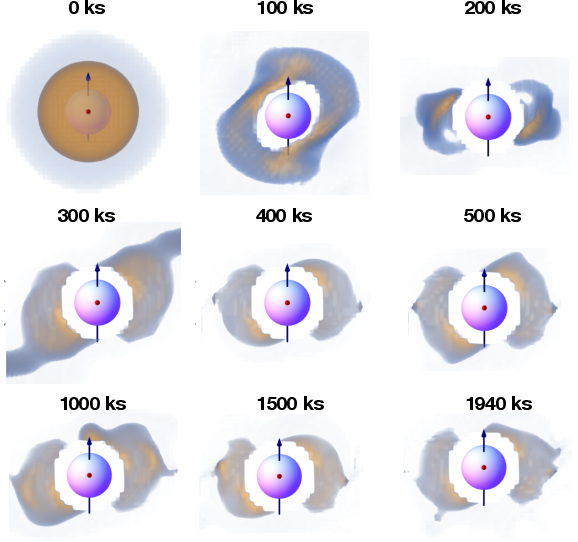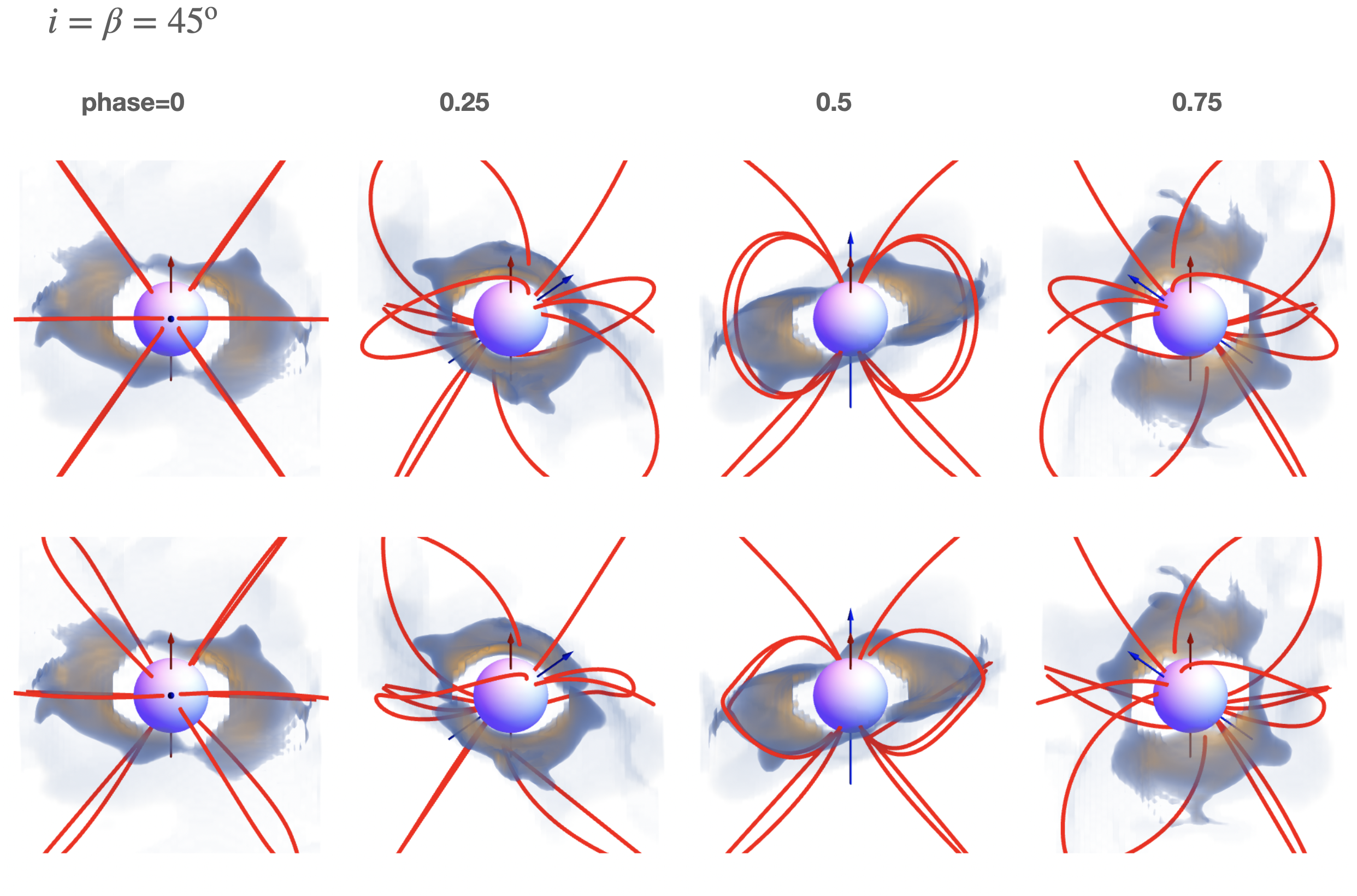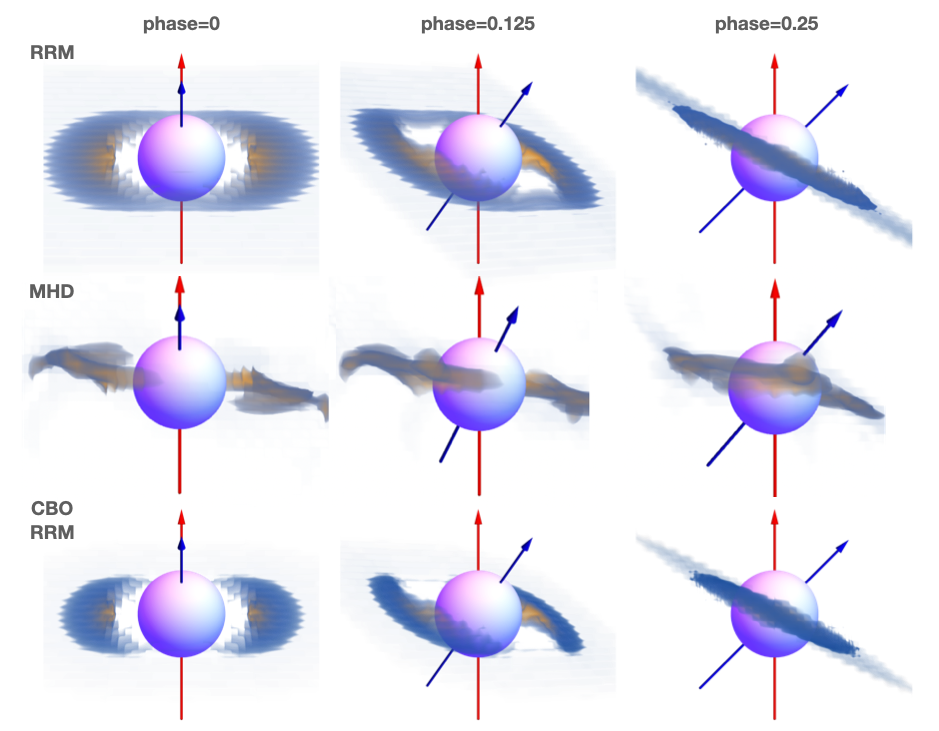- The paper introduces 3D MHD simulations to detail how oblique dipole fields drive centrifugal magnetosphere dynamics in massive B-type stars.
- Utilizing the PLUTO MHD code with parameters like η* = 10³ and a 45° dipole tilt, the study robustly captures wind dynamics and magnetic distortions.
- Findings indicate that azimuthal mass buildup and a radial density decline of σ ~ 1/r⁵ challenge standard RRM assumptions, highlighting centrifugal breakout effects.
Oblique Dipole Centrifugal Magnetospheres of Massive Stars
Introduction
The paper presented in "3D MHD models of the centrifugal magnetosphere from a massive star with an oblique dipole field" (2301.11858), explores the complex magnetosphere of massive B-type stars with a tilted magnetic field. Aimed at understanding the intricate interplay between stellar winds and magnetic confinement, this paper employs 3D magnetohydrodynamic (MHD) simulations to reveal the formation of centrifugal magnetospheres (CM) from these oblique dipole fields.
Numerical Setup and Initial Conditions
Utilizing the PLUTO MHD code, the paper simulates the wind dynamics of massive stars with oblique dipole magnetic fields. Key parameters include a magnetic confinement parameter η∗=103, a rotation speed at half the critical level, and a dipole tilt angle β=45∘. The spherical grid involves 250 radial cells extending to 25 stellar radii, optimized to capture the sonic point of the wind near the stellar surface. Boundary conditions facilitate continuous wind feeding and material outflow.
Simulation Results
The focus is on the dynamical evolution of the CM, its spatial distribution, and its comparison with the Rigidly Rotating Magnetosphere (RRM) model. Over time, trapped wind material forms distinct, azimuthally constrained wing-like structures around the magnetic and rotational equators.

Figure 1: Time evolution of the standard model (η∗=103, W=1/2, β=45∘), displaying the quasi-steady state of the co-rotating structure with occasional centrifugal breakouts.
Comparison with a nearly aligned magnetic field (β=5∘) showcases how higher obliquity influences density distribution, leading to confined azimuthal wings rather than disks.
Magnetic Field Distortion
Analysis of the magnetic field evolution highlights the significant distortion caused by rotational and centrifugal forces acting on plasma trapped within the CM. The magnetic field lines show a pronounced stretching, particularly during centrifugal breakout events.

Figure 2: Dynamic distortion of magnetic field lines at the final time step illustrating wind dynamics' impact on the field.
Dynamics and Mass Distribution
2D slices of density and field lines further elucidate the CM's structural changes. The azimuthal asymmetry in density leads to prograde extension, favoring more massive build-up at intersections of magnetic and rotational equators.

Figure 3: Time evolution of density and field lines revealing centrifugal breakout events, mainly visible in the yz and xz planes.
Implications for the Rigidly Rotating Magnetosphere Model
The MHD simulations validate and extend the RRM paradigm by illustrating discrepancies in density scaling, emphasizing the centrifugal breakout-driven distortion of magnetic fields. The radial decline in surface density approximates σ∼1/r5, contrasting with the RRM's assumption of σ∼1/r3.

Figure 4: Comparison between MHD-derived density variations and RRM predictions, adjusted for centrifugal breakout influences.
Conclusion
The research advances our understanding of centrifugal magnetosphere dynamics in massive stars with tilted magnetic fields. It reveals significant complexities in azimuthal mass distribution and magnetic distortion, challenging assumptions under standard RRM models. Future studies will benefit from exploring broader confinement parameters and tilt angles to refine our comprehension of magnetospheric behavior across diverse stellar types.



